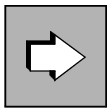If you wish to use the event management options provided by openUTM, you can automate administration activities as described below.
There are two ways of doing this.
openUTM signals a certain event (e.g. the loss of a connection) by sending a UTM message to the destination MSGTAC. This message automatically activates the MSGTAC event service. The MSGTAC routine reads in the message, evaluates it, and initiates the appropriate administration function.
The following preparations are required here:
Assign the destination MSGTAC to all UTM messages relevant for administration. The UTM tool KDCMMOD (KDC Message MODify) is provided for this purpose.
Define the MSGTAC routine as a KDCS program unit into which messages are read using the KDCS call FGET. Evaluation of the messages is easy to program, since openUTM provides data structures that correspond to the structure of the messages (in the COPY element KCMSGC for COBOL, and in the header file kcmsg.h for C/C++). Use FPUT or DPUT calls to initiate the corresponding administration functions.
During generation, add the modified message module to the configuration using the KDCDEF statement MESSAGE, and assign the transaction code KDCMSGTC to the MSGTAC routine using the KDCDEF statement TAC.
Link the compiled message module and MSGTAC routine into the application program.
The openUTM manual „Programming Applications with KDCS” contains further information on the MSGTAC event service, as well as sample MSGTAC routines in C and COBOL.
Automatic administration is possible using the message destinations USER-DEST-n (n=1,2,3,4) in exactly the same way as using MSGTAC.
Assign an asynchronous TAC to a message destination USER-DEST-n using the KDCDEF statement MSG-DEST and then assign the message destination USER_DEST-n to the relevant UTM messages using the KDCMMOD utility program.
You can then read the messages and issue administration calls in the program assigned to the asynchronous TAC – in the same way as in the MSGTAC routine.

